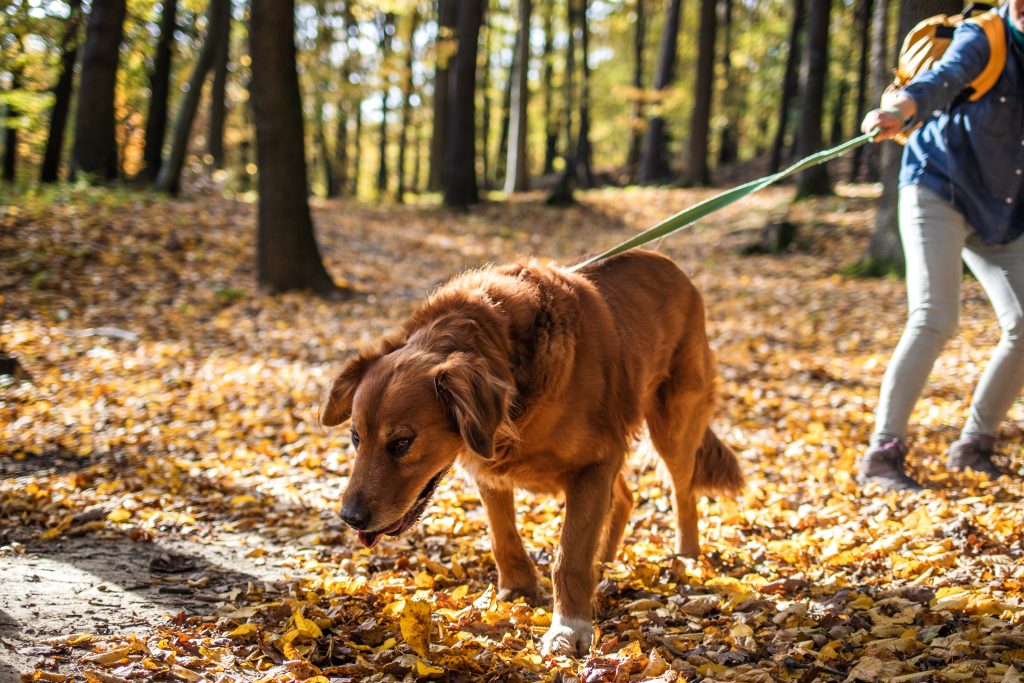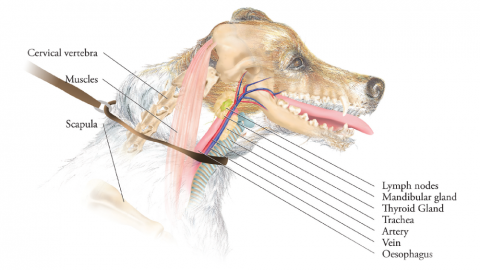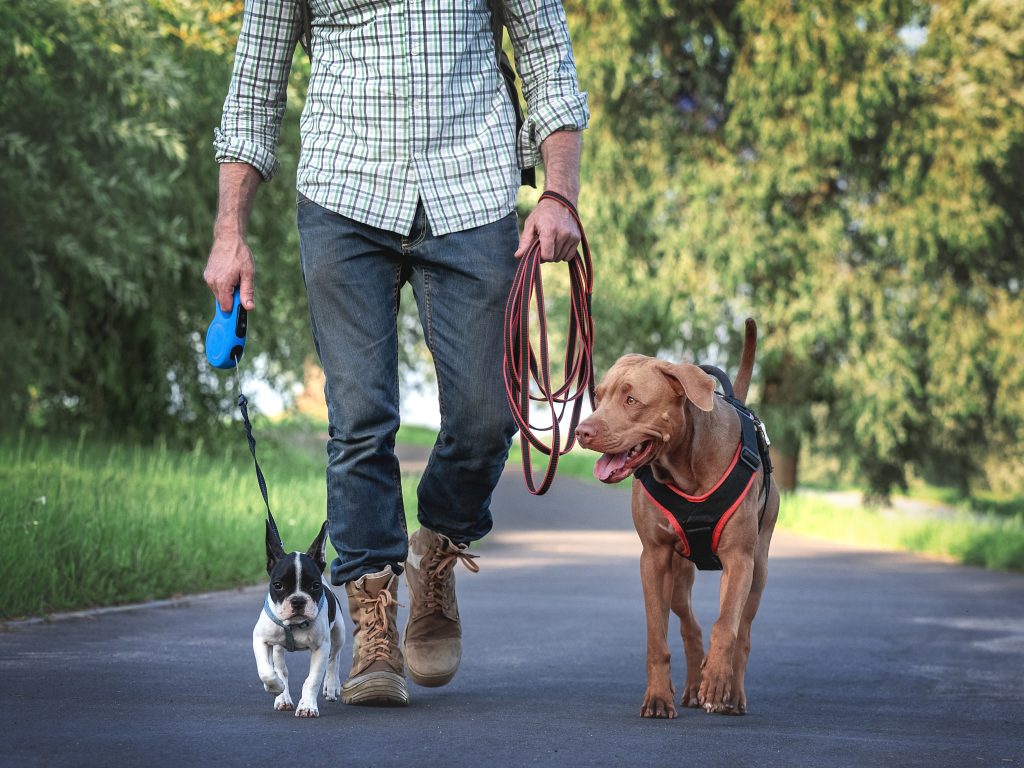Why a Harness Is Safer and More Humane Than a Collar for Walking Your Dog
Imagine this: Elon Musk, the wealthiest person on Earth, suffers from chronic neck and back pain. This debilitating condition was caused by a single ill-fated attempt to ‘judo throw’ a 350-pound sumo wrestler at his own birthday party. The result? A herniated disc in his neck, multiple surgeries, and a significant decrease in his quality of life. This serves as a stark reminder of how even a brief moment of intense force can have long-lasting consequences on the human body.
Now, think about your dog. Their delicate neck is constantly under pressure from a traditional collar, potentially leading to issues as serious—if not more severe—than those suffered by Musk. Chronic pain, difficulty breathing, and a diminished quality of life could all be the result.
Dogs can’t express their pain or advocate for themselves. They rely entirely on us to make informed decisions that prioritize their well-being. Just as we wouldn’t knowingly subject ourselves to chronic pain, we should avoid putting our canine companions through similar suffering.
When walking your dog, choosing the right equipment is crucial for their safety, comfort, and overall well-being. While collars have traditionally been the go-to choice for many human companions, harnesses have emerged as a more humane and safer alternative. Here’s why a harness is the best option for your furry friend.
1. Protects the Neck and Throat
One of the most significant benefits of a harness is that it prevents strain on your dog’s neck and throat. Pulling on a collar can cause injuries to the trachea, larynx, and cervical spine, especially for smaller breeds, puppies, or dogs prone to respiratory issues.
Dr. Erica Tramuta-Drobnis, a veterinarian and public health expert, explains, “Collars can put excessive pressure on a dog’s neck, which may damage the trachea or cervical spine. Harnesses are much safer, particularly for dogs prone to pulling.”
👉 Collars risk causing neck injuries in dogs, study shows
👉 Why Your Dog May Get Seriously Injured From Pulling Too Hard
2. Better Control for You
Harnesses provide more control over your dog’s movements, especially for larger or more energetic breeds. The design allows you to guide your dog gently without the risk of causing harm, making walks more enjoyable for both you and your pet.
The American Kennel Club (AKC) notes, “Harnesses offer better control for owners and can make walks less stressful for dogs who are still learning leash manners.”
3. Reduces Pulling Behavior
Harnesses, particularly those designed with a front clip, can discourage pulling by redirecting your dog’s forward momentum. This makes training your dog to walk calmly by your side easier, fostering better leash manners over time.
Victoria Stilwell, a renowned dog trainer, states, “Harnesses with front leash clips are great tools for teaching dogs to walk nicely on a leash because they give owners the ability to redirect pulling without causing discomfort.”
4. Safer for Dogs with Medical Conditions
For dogs with pre-existing medical issues, such as neck injuries, collapsed tracheas, or spinal problems, a collar can exacerbate their condition. A harness offers a safer and more supportive option, allowing them to enjoy their walks without added discomfort.
Dr. Katherine Houpt, a veterinary behaviorist, emphasizes, “For dogs with medical or structural issues, harnesses are a necessity. They provide support without risking further injury.”
5. More Secure for Escapists
Some dogs are masters at slipping out of their collars, which can be dangerous in high-traffic areas or unfamiliar environments. Harnesses are more challenging for dogs to escape, providing peace of mind during outings.
The Humane Society of the United States advises, “Harnesses with proper fit and design are more secure and reduce the likelihood of a dog slipping free, especially in busy areas.”
6. Comfort and Versatility
Modern harnesses are designed with comfort in mind, offering padded materials, adjustable straps, and breathable fabrics. Unlike collars that can dig into the neck, harnesses fit snugly around the chest and shoulders, reducing irritation and discomfort.
According to the ASPCA, “Harnesses are designed to distribute pressure evenly across a dog’s body, making them a more comfortable choice for long walks and active outings.”
7. Ideal for Puppies and Training
A harness is an excellent tool for young dogs learning to walk on a leash. It allows you to guide them gently while minimizing the risk of injury, which is especially important for growing puppies.
8. Promotes Observer Well-being
Witnessing dogs walked solely in collars can cause concern for some individuals due to the potential for neck injuries. This can lead to feelings of sadness or worry. In contrast, observing dogs walking in harnesses often evokes positive emotions and a sense of relief, contributing to observers’ greater sense of well-being.
Making the Switch
Switching from a collar to a harness doesn’t have to be complicated. Look for a harness that fits well and is appropriate for your dog’s size, breed, and activity level. Introduce it gradually, using treats and positive reinforcement to help your dog feel comfortable.
How to Encourage Others to Switch to a Harness
While switching to a harness offers clear benefits, not all human companions know the advantages. Here are ways to help them make the change:
1. Educate with Facts
• Share the risks of using collars, such as potential trachea injuries, spinal strain, or choking hazards.
• Highlight the benefits of harnesses, including better control and a more humane design.
• Use credible sources like veterinary studies, quotes from professionals, or endorsements from organizations like the AKC or ASPCA.
2. Demonstrate the Difference
• Show how a harness works on your dog or a friend’s pet to illustrate the comfort and control it provides.
• If possible, lend a harness to someone so they can try it out with their dog during a walk.
3. Address Common Concerns
Some people hesitate to switch due to misconceptions or practical concerns. Address these directly:
• Concern: “Harnesses are hard to use.”
• Solution: Recommend an easy-to-use harness, such as a step-in design or one with quick-release buckles.
• Concern: “My dog doesn’t like wearing new gear.”
• Solution: Explain how to introduce a harness gradually using treats and positive reinforcement.
• Concern: “Harnesses are too expensive.”
• Solution: Share budget-friendly options and explain that investing in a good harness can prevent costly medical issues.
4. Share Personal Success Stories
Talk about how switching to a harness improved walks for you and your dog. Personal anecdotes are often more convincing than abstract advice.
5. Recommend Specific Products
Help simplify the process by suggesting reliable brands or models based on the dog’s size and behavior. This saves human companions the hassle of researching on their own.
6. Promote Harness Use in Your Community
• If you’re part of a dog group, discuss the topic or host a workshop demonstrating harness benefits.
• Share informative posts or videos on social media to reach a broader audience.
7. Advocate Through Professionals
Encourage veterinarians, trainers, and groomers to recommend harnesses to their clients. Trusted professionals often have the most influence on pet care decisions.
8. Free Harnesses for Dog Walkers
If you’re able, consider purchasing extra harnesses (discount stores like Marshalls or HomeGoods often have great deals) or even repurposing gently used harnesses from your dogs. Keep them with you during walks or in your car. If you encounter someone walking their dog solely in a collar or prong collar, offer them a harness as a gift.
I’ve personally handed out several harnesses, including those from my beloved dogs who have passed, to people walking dogs without harnesses. Most were grateful; in one instance, I even convinced someone to trade their prong collar for a new harness.
Why It Matters
Switching from a collar to a harness isn’t just a trend; it’s a shift toward prioritizing the comfort and safety of our pets. Helping other human companions understand the benefits improves their dogs’ lives and fosters a more compassionate approach to pet care.
Whether through education, demonstrations, or shared experiences, helping others switch to a harness can have a lasting positive impact. A harness offers a safer, more humane alternative to traditional collars, ensuring dogs and their owners enjoy stress-free walks together. By prioritizing your dog’s comfort and safety, you’ll strengthen your bond and set the foundation for a lifetime of happy adventures together.
Have you helped someone switch to a harness? Share your tips and experiences in the comments below! Together, we can make a difference in the lives of dogs and their families.








































Leave a Reply